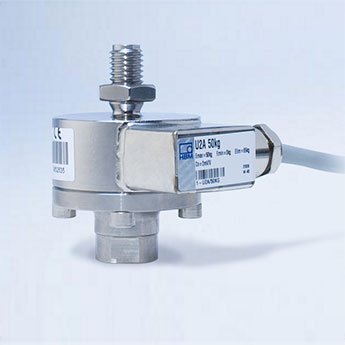Strain gauge load cells are mechanical in nature. This mechanical element makes use of a strain gauge, or multiple strain gauges, in order to sense a deformation caused by the force applied.

Strain gauges often vary in size, production materials, and even mechanical setup in order to accommodate different loads. They can also have varying sensitivities based on their intended purpose. Despite having different designs, all strain gauges work on the same concept, turning deflection into a change in resistance.
Common strain gauges are made up of a very fine wire or foil in a grid pattern, wherein a linear change in electrical resistance can be caused by detecting strain due to force, weight, or pressure in a specific direction. There is often a base resistance of 120Ω, 350Ω, or 1,000Ω.
As noted above, every strain gauge can have different levels of sensitivity. This is expressed as the “gauge factor,” or GF, and is defined as the ratio of fractional change in electrical resistance to the fractional deformation in the direction the force is applied (or strain).